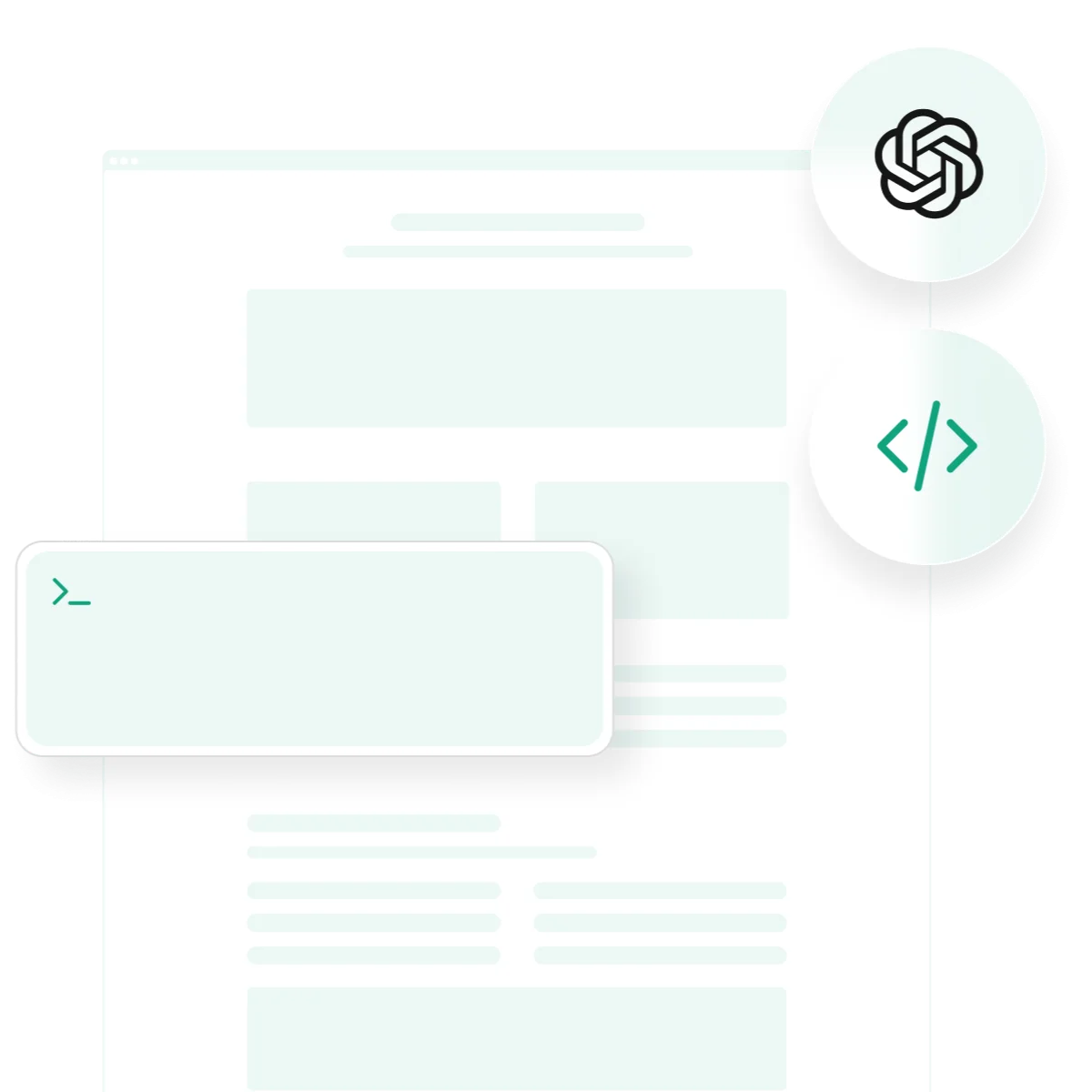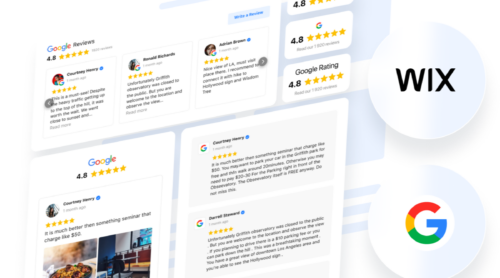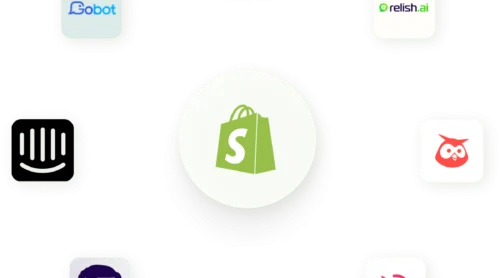What is an OpenAI API Key?
If you’re looking to integrate artificial intelligence (AI) into your projects, you’ve likely heard of OpenAI and its powerful API. OpenAI offers developers access to cutting-edge AI models that can be used for everything from building chatbots to automating tasks.
An OpenAI API key is a unique identifier that allows you to access the powerful AI models provided by OpenAI, such as GPT-3, GPT-4, DALL·E, and others. It acts as your access key to the powerful AI tools offered by OpenAI platform through its APIs. Without it, you won’t be able to make requests or use OpenAI’s models.
The key is vital for the authentication process, as it enables OpenAI to track your usage, assign the correct permissions, and ensure secure communication between your application and OpenAI’s servers.
How to Get OpenAI API Key
Getting an API key is a straightforward process. Follow these steps to begin using the OpenAI API:
- Create an account on OpenAI. Go to OpenAI’s website and sign up. You’ll need to provide an email address and create a password.
- Navigate to the API section. Once logged in, click on your profile icon in the top right corner of the dashboard and select “API” or “Manage API Keys” from the dropdown menu.
- Generate or view your API key. If you don’t have an API key yet, you can generate one by clicking the “Create new secret key” button. If you already have one, it will be displayed here. Make sure to copy and store your API key in a secure place, as it is necessary for interacting with the OpenAI API.
- Secure your API key. For security reasons, never share your API key publicly or expose it in client-side code. Always keep it in a secure, server-side environment.
When making requests to the OpenAI API, include this key in the headers for authentication.
You can access this page anytime to manage or regenerate your API key if necessary.
Next Steps on OpenAI API Usage
Now that you have your API key, let’s dive into how to use the OpenAI API.
Using the OpenAI API requires basic knowledge of HTTP requests, as it operates via RESTful APIs. You can interact with OpenAI’s models by sending HTTP POST requests, specifying the model you want to use, and providing the required input data in your request.
Start with installing the OpenAI SDK (Software Development Kit) in your project. Here’s how to do it with Python:
pip install openaiNext, you need to authenticate your API requests by setting your API key in the code:
import openai
openai.api_key = "your-api-key-here"With the SDK set up, you can now interact with OpenAI’s models. Here’s an example of generating text using GPT-3:
response = openai.Completion.create(
engine="text-davinci-003",
prompt="Tell me a joke",
max_tokens=50
)
print(response.choices[0].text.strip())In the code above, the engine refers to the model you’re using (such as text-davinci-003), and the prompt is the input you want to give to the model. The max_tokens parameter limits the response length.
After making a request, you will receive a response from the API. The response will contain the output generated by the model, which could be text, code, an image, or any other format depending on the model and task.
Once you have received the API response, you can use the data however you like within your application. For example, if you’re generating text, you might display the generated content on your website or use it to automate certain tasks.
If there’s an issue with your request (e.g., invalid API key, reaching rate limits, etc.), OpenAI will send an error response with details. Make sure to include proper error handling in your application to handle these situations gracefully.
Important Aspects of Using the OpenAI API
🔑 API Key Security
Keep your OpenAI API key safe! It’s your unique access point to the API, so avoid sharing it publicly to protect your account and usage.
💸 OpenAI API Pricing
OpenAI’s billing system is a pay-as-you-go model. Be aware of your API usage and how it affects your costs, especially if you’re using powerful models like GPT-4.
⏱️ OpenAI API Rate Limits
OpenAI imposes rate limits on API requests to prevent overload. Be mindful of these limits to avoid disruptions in service.
🏷️ Token Management
Tokens are the basic units of text processing in OpenAI’s models. Understanding how tokens work will help you optimize API usage and keep costs in check.
🤖 Choosing the Right Model
OpenAI offers a variety of models (e.g., GPT-3, GPT-4, Codex, DALL-E). Choose the model that best fits your needs, whether it’s for content generation, code assistance, or image creation.
OpenAI API Models Overview
OpenAI provides several models through its API, each designed for different tasks using artificial intelligence. Here’s an overview of the most popular models available via the OpenAI API:
| Model | Description | Use Cases | Performance |
|---|---|---|---|
| GPT-3 (Generative Pre-trained Transformer 3) | GPT-3 is a powerful language model capable of generating human-like text based on the input you provide. It can perform a variety of tasks such as answering questions, writing articles, generating code, creating summaries, and even engaging in conversations. | – Text generation and completion – Language translation – Content creation and summarization – Code generation (e.g., Python, JavaScript) | GPT-3 is known for its flexibility, producing coherent and contextually relevant responses across a wide range of topics. |
| GPT-4 | GPT-4 is the next iteration of the GPT series, offering even more advanced capabilities compared to GPT-3. With improved accuracy, understanding, and reasoning abilities, GPT-4 excels at tasks that require more nuanced responses, complex reasoning, or multimodal input (i.e., processing both text and images). | – Advanced conversational AI (e.g., chatbots) – Legal document analysis – Complex data interpretation and summaries | GPT-4 is significantly better at understanding context, handling longer prompts, and providing more accurate responses, making it ideal for enterprise-level applications. |
| Codex | Codex is a model specialized for code generation. Built on the GPT-3 architecture, Codex has been fine-tuned specifically to understand programming languages and write code in languages such as Python, JavaScript, and more. | – Auto-completion of code – Code generation from natural language instructions – Code debugging and suggestions | Codex is capable of understanding complex programming tasks and generating efficient code based on high-level descriptions. |
| DALL·E | DALL·E is a model designed to generate images from textual descriptions. This model can create unique, high-quality images based on prompts such as “an astronaut riding a horse in a futuristic city.” | – Creative image generation – Visual content creation for marketing or social media – Custom artwork generation based on text prompts | DALL·E produces highly detailed and creative visuals, often surprising users with the level of creativity it demonstrates in image generation. |
| Whisper | Whisper is OpenAI’s speech-to-text model, capable of transcribing audio into written text. It supports multiple languages and can handle various accents and dialects with high accuracy. | – Speech-to-text transcription – Real-time voice recognition and translation – Audio content indexing and analysis | Whisper provides robust transcription capabilities, especially useful for podcasts, interviews, and multilingual applications. |
| Embeddings Models | OpenAI’s Embeddings Models transform text into numerical vectors that capture the semantic meaning of the text. These embeddings make it easier to compare and search for similar content, enabling efficient document retrieval, clustering, and categorization based on meaning rather than keywords. | – Semantic search and document retrieval – Text clustering and categorization – Recommendation systems – Sentiment analysis and classification | Embeddings models provide accurate, context-aware representations of text, delivering fast and scalable results for real-time applications like search engines and recommendation systems. |
By choosing the right model for your project, you can leverage OpenAI’s API to enhance your application and solve complex problems. Each model has its strengths and is designed for specific tasks, so understanding their capabilities and limitations is key to integrating them effectively into your project.
OpenAI API Integration to Maximize AI Functionality on Your Applications
Integrating OpenAI’s API into your web or mobile application can unlock powerful AI functionalities such as text generation, sentiment analysis, and more. Here’s how you can integrate it into different platforms:
For Web Applications:
Set up a backend server
To securely handle API requests, set up a backend server (e.g., using Node.js, Python, or Django). This will interact with the OpenAI API on behalf of your front-end.
Client-side interaction
In the front-end of your web app (built with frameworks like React, Vue, or Angular), you can send requests to your backend server, which will then forward the API calls to OpenAI.
For Mobile Applications:
Mobile app integration (iOS/Android)
For iOS, use URLSession for sending HTTP requests, and for Android, use Retrofit or OkHttp to interact with the OpenAI API. Your app will send data to your backend, which will manage API requests.
Real-time updates
You can implement features like real-time text generation or customer support chatbots by using WebSockets or polling from the mobile application to get the API’s response asynchronously.
Example for Web (Node.js Backend):
const express = require('express');
const axios = require('axios');
const app = express();
const PORT = 3000;
app.use(express.json());
app.post('/get-response', async (req, res) => {
try {
const response = await axios.post('https://api.openai.com/v1/completions', {
model: 'text-davinci-003',
prompt: req.body.prompt,
max_tokens: 50,
}, {
headers: {
'Authorization': `Bearer your-api-key`,
}
});
res.json(response.data);
} catch (error) {
res.status(500).send('Error interacting with OpenAI API');
}
});
app.listen(PORT, () => {
console.log(`Server running on http://localhost:${PORT}`);
});In this Node.js example, we’ve created a simple backend to handle API requests. When a user sends a prompt to the /get-response route, the backend makes a POST request to OpenAI’s API and returns the response.
OpenAI API Use Cases
The OpenAI API offers a wide range of capabilities, making it a versatile tool for various real-world applications. Whether you’re building a chatbot, generating content, analyzing text, or solving unique business challenges, OpenAI’s models can be integrated into your projects to deliver sophisticated AI-powered solutions.
Chatbots
OpenAI’s GPT models are ideal for creating conversational agents that can engage users in meaningful dialogues. By using the API to power chatbots, businesses can automate customer support, conduct surveys, provide personalized recommendations, or even act as virtual assistants.
Best examples:
Customer support chatbots
Integrating GPT-3 or GPT-4 into a customer service chatbot enables businesses to handle common queries, provide quick responses to users, and guide them through troubleshooting steps.
Content generation
Generating high-quality content is a common application for OpenAI’s API. It can be used to write articles, blogs, social media posts, product descriptions, or even creative content like poetry or storytelling.
Best Examples:
- Blog and article writing
Many companies use the OpenAI API to assist in generating blog posts or articles by providing prompts or outlines. The model helps by expanding ideas into well-written, cohesive content. - Product descriptions
E-commerce platforms can automate product descriptions, saving time while maintaining uniqueness and engaging language across a wide variety of products.
Text analysis
OpenAI’s models can also be used to analyze and process text for various purposes, including sentiment analysis, keyword extraction, summarization, and content categorization. Businesses can leverage these capabilities to gain insights into customer feedback, social media posts, or even analyze large datasets of documents.
Best examples:
- Sentiment analysis
Analyzing customer feedback or reviews to determine sentiment (positive, negative, or neutral). This helps businesses quickly understand customer satisfaction and identify areas for improvement. - Text summarization
OpenAI’s models can summarize large documents, news articles, or research papers, making it easier for users to digest important information without reading the full text.
Other use cases
There are many other creative OpenAI API examples and business applications that leverage OpenAI models. The versatility of the OpenAI API extends beyond these common examples.
Best examples:
- Code generation and debugging
Developers can use the OpenAI API to generate code snippets, provide solutions for programming problems, or even assist in debugging by suggesting improvements or identifying issues in code. - Language translation and localization
OpenAI models can translate text from one language to another, enabling businesses to expand their reach and support multiple languages. - Data entry automation
For industries like healthcare or finance, OpenAI’s API can be used to automate data entry tasks by extracting relevant information from documents and inputting it into structured systems.
OpenAI API Pricing
OpenAI offers a flexible pricing model based on usage, allowing developers to pay only for the tokens and requests they use. A token is typically a word or part of a word, and both input and output tokens contribute to the cost. The pricing structure is designed to accommodate both small projects and large-scale applications.
Here’s an overview of the pricing per 1 million tockens for some of the models and their use cases:
| Model | Use Case | Input | Output |
|---|---|---|---|
| gpt-3.5-turbo | text-tokens | $0.50 | $1.50 |
| gpt-4o | text-tokens | $2.50 | $10.00 |
| gpt-4o-2024-08-06 | fine-tuning: training: $25.00 | $3.75 | $15.00 |
| DALL·E 3 | image generation (standard size, quality) | $0.04 | $0.08 |
| Whisper | transcription | $0.006/min |
For detailed and up-to-date information on the OpenAI API price, visit OpenAI’s official pricing page.
Best Practices to Estimate and Minimize OpenAI API Costs
To estimate costs effectively and avoid unexpected charges, consider the following strategies:
- Use the right model. Choose the appropriate model (e.g., GPT-3 or GPT-4) based on your needs.
- Minimize requests. Make sure each API call is optimized and returns as much data as possible.
- Set limits on usage. You can set usage limits for each project, which can help ensure you don’t exceed a certain number of tokens or cost.
- Review usage regularly. Monitor your token usage, as both input and output tokens contribute to the total cost, understanding your usage patterns you can adjust accordingly.
- Choose a plan with a predictable monthly cost. If you need a predictable budget, choose a plan that offers a set number of tokens per month, reducing the chances of unexpected overages.
You can keep track of your API usage and spending using OpenAI’s dashboard, which provides insights into how many tokens you’ve used and how much you’ve spent.
Elfsight’s AI Chatbot: A Simpler Alternative to OpenAI API
While the OpenAI API offers robust capabilities, it can be complex to implement and manage for those looking for a more user-friendly solution. Elfsight’s AI Chatbot provides a straightforward alternative, designed to bring AI-powered conversational abilities to your website with ease.
The AI Chatbot widget from Elfsight offers a simple, customizable solution to integrate AI-driven conversations into your site. It doesn’t require any coding knowledge, making it an excellent option for both beginners and those who want a fast, efficient way to add chatbot functionality to their sites.
Why Choose Elfsight’s AI Chatbot?
🖥 User-friendly interface. Set up is quick and easy, with no coding required.
🎨 Customization. Tailor the chatbot’s appearance and behavior to match your website’s design and tone.
⏰ 24/7 support. Engage with customers around the clock, providing them with answers at any time.
🔌 Integration-ready. Easily integrates into any website platform, including WordPress, Shopify, and Squarespace.
Here’s a quick and easy guide to adding an AI chatbot to your website:
- Open the widget editor for the AI Chatbot.
- Set up the chatbot’s behavior, such as crafting the welcome message and programming its standard replies.
- Customize the design of the widget to ensure it fits seamlessly with your website’s overall style and branding.
- Copy the embed code and paste it into the HTML of your site.
- Hit publish to make it live.
Your chatbot is now ready to engage with visitors!
Want to see how easy it is to set up? Try using the intuitive editor for Elfsight’s AI Chatbot and start enhancing user interactions today.
Comparative Table: Elfsight AI Chatbot vs OpenAI API
| Feature | Elfsight AI Chatbot | OpenAI API |
|---|---|---|
| Ease of Use | Simple setup with no coding needed | Requires coding knowledge for implementation |
| Customization | Highly customizable chatbot appearance & behavior | Requires more effort for customization |
| Integration | Easily integrates into various platforms (WordPress, Shopify, etc.) | Requires additional setup for platform integration |
| Support | 24/7 live support available | Support depends on the provider and documentation |
| Pricing | Affordable subscription plans with transparent pricing | Pay-as-you-go pricing, which can become costly |
| Use Case | Ideal for websites seeking a quick, reliable chatbot solution | Great for complex AI tasks requiring custom models |
FAQ
Where Can I find the OpenAI API key?
To find your OpenAI API key:
- Go to OpenAI’s platform and log in.
- Navigate to the “API” section from your dashboard.
- If you don’t have a key yet, click “Create new secret key”. If you already have one, it will be displayed here.
Where can I find OpenAI documentation and tutorial?
The OpenAI API documentation is available on OpenAI’s official website. It is regularly updated to include new features, models, and usage guidelines. You can access it here: OpenAI API Documentation.
How can I optimize my token usage to minimize costs?
To minimize token usage and associated costs, consider the following tips:
- Use shorter prompts: While providing context is essential, try to minimize unnecessary text.
- Fine-tune models (if applicable): Fine-tuning a model on your specific task can sometimes yield better results with fewer tokens.
- Limit output length: Set parameters like max_tokens to control the length of the model’s responses.
- Avoid unnecessary API calls: Cache responses when possible, so you don’t need to make repeated calls for the same data.
Can I use the OpenAI API for chatbots on my website?
Yes, the OpenAI API is a great tool for building intelligent chatbots. By utilizing models like GPT-3 or GPT-4, you can create conversational AI that understands context and provides responses that mimic human conversations. However, if you’re looking for a simpler, no-code solution for your website, Elfsight’s AI Chatbot widget provides a straightforward option with easy customization. You can set it up quickly without requiring any technical expertise. Check out our article on how to build an AI Chatbot for a website for more information.
How can Elfsight’s AI Chatbot help improve user engagement on my website?
Elfsight’s AI Chatbot can interact with visitors in real-time, answering their questions, providing assistance, and improving engagement by offering 24/7 customer support. Learn more about how you can create a powerful AI-driven experience with Elfsight’s chatbot in our article on how to add AI chatbots to your website.
What are some alternatives to using OpenAI API for AI-powered chatbots?
If you’re looking for an alternative to using OpenAI API for your AI chatbot, Elfsight’s AI Chatbot widget is a great option. It’s designed for users who prefer an easy-to-use, customizable solution without the need for coding. This widget offers features like pre-designed templates, multilingual support, and real-time chat analytics. Learn more about the best AI chatbot builders from our article.
Conclusion
The OpenAI API is a powerful tool for developers and businesses looking to integrate AI capabilities into their applications. It offers advanced features like text generation, image creation, and code automation. However, for those seeking a simpler, no-code solution, Elfsight’s AI Chatbot presents a more accessible and user-friendly alternative for those looking to quickly and easily integrate conversational AI into their websites. With its intuitive interface, affordable pricing, and seamless integration, Elfsight’s AI Chatbot is an excellent choice for businesses and website owners seeking to enhance customer engagement without the complexity of traditional API setups.
Whether you need a straightforward chatbot for customer support or want to experiment with more advanced AI features, both options have their merits.







